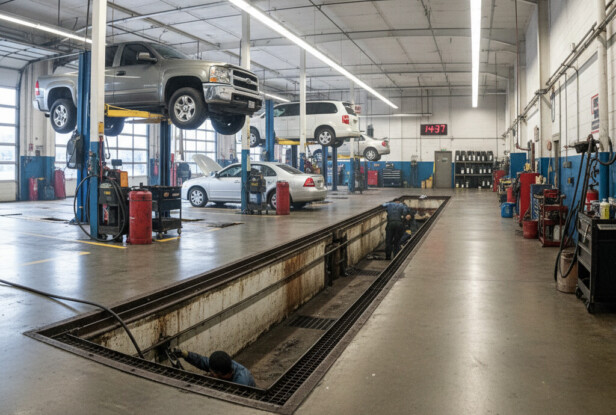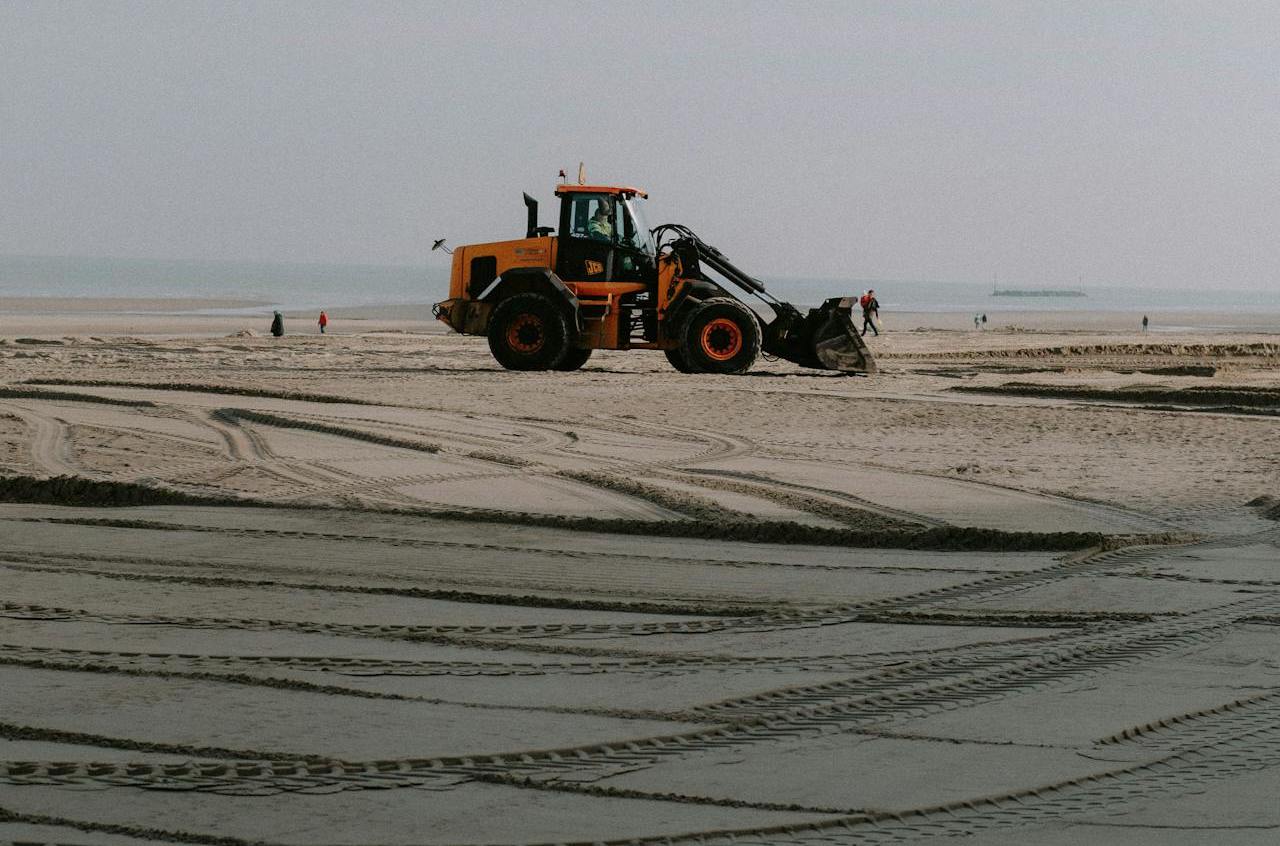Quick lube pit design permit Arlington searches produce results for two distinct jurisdictions. Arlington, TX and Arlington County, VA both require proper permits and safe pit designs before construction begins.
Shop owners in both locations must coordinate with local authorities early in the design phase to clarify electrical classification requirements and permit scope. The process flows through online applications, plan reviews, permit issuance, and required inspections before facility opening. Both jurisdictions emphasize service bay safety, pit covers, and proper ventilation in their approval process.
How Does NEC Article 511 Affect Quick Lube Pit Electrical Classification?
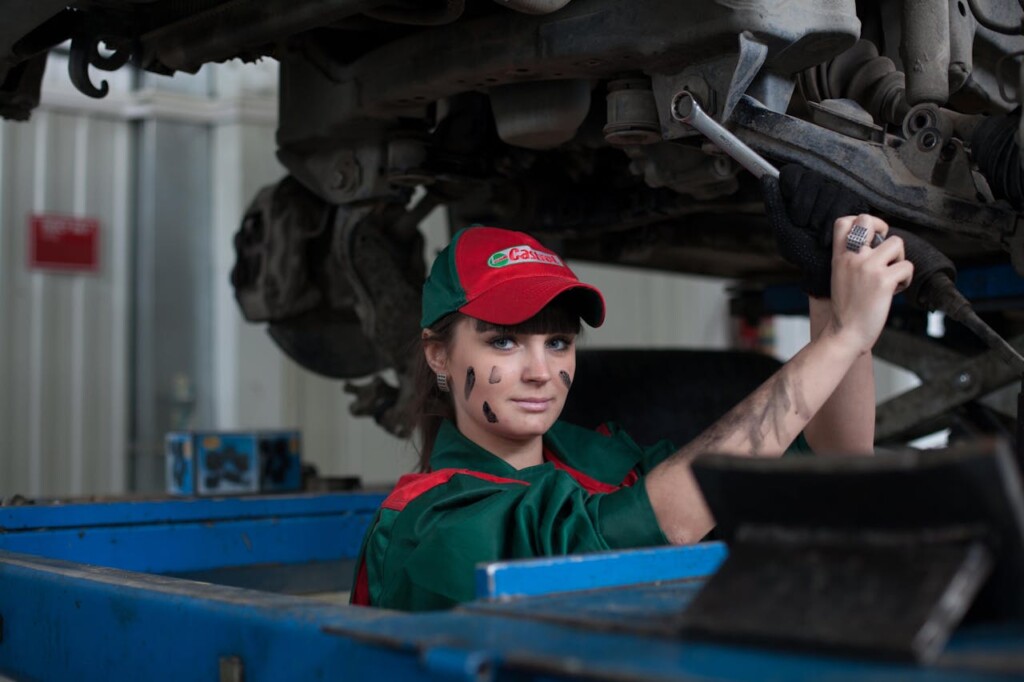
We follow a basic rule when approaching electrical classification for quick lube pits: minor repair garages can achieve unclassified status through proper ventilation, while major repair facilities face stricter requirements. NEC Article 511 provides the framework for commercial garage electrical installations, distinguishing between facilities based on their repair activities and fuel handling practices.
The classification process hinges on three critical factors that we evaluate during design coordination. First, we determine whether the facility qualifies as a major or minor repair garage under NEC definitions. Second, we assess ventilation adequacy and air exchange rates. Third, we consider vapor characteristics, particularly whether gases are lighter or heavier than air, which affects their accumulation patterns in below-grade spaces.
Ventilation Requirements Create The Path To Unclassified Status
Under NEC 511.3(D)(1)(a), we can design minor repair garage pits as unclassified locations when mechanical ventilation provides adequate air exchange. The code requires a minimum of 1 cubic foot per minute per square foot of floor area during occupied hours or when vehicles are present. This ventilation must draw exhaust from within 12 inches of the pit floor to effectively remove any accumulated vapors.
We coordinate with mechanical engineers early to ensure exhaust systems meet these specifications. The ventilation design must operate continuously during business hours and automatically activate when vehicles enter service bays. Proper air exchange eliminates the heavier-than-air vapors that could otherwise accumulate in pit areas, removing the need for hazardous location electrical equipment.
Natural gas presents a different scenario since it rises rather than settling in pits. We note this distinction when evaluating facilities that service compressed natural gas vehicles, as the lighter-than-air characteristics mean different classification considerations apply to ceiling areas versus pit spaces.
AHJ Authority Determines Final Classification
The authority having jurisdiction holds ultimate responsibility for electrical classification decisions, even when ventilation appears adequate under code requirements. We engage with local electrical inspectors during the design phase to confirm their interpretation of NEC Article 511 requirements and any local amendments or enforcement practices.
If the AHJ classifies a pit as Class I, Division 2, we must specify explosion-proof or intrinsically safe electrical equipment regardless of ventilation provisions. This classification drives significant cost implications for lighting fixtures, receptacles, junction boxes, and wiring methods. We design lighting systems, receptacle placement, and equipment locations accordingly, using threaded rigid metal conduit or intermediate metal conduit as required.
Discussion among electrical professionals indicates that diesel fumes alone typically do not create sufficient fire hazard to warrant hazardous classification. However, we defer to the AHJ’s determination rather than making assumptions about vapor accumulation risks or ignition sources in specific installations.
What Pit Design And Safety Features Should Be Planned?
We approach quick lube pit design from a construction perspective that prioritizes technician safety while supporting efficient workflow patterns. Safety equipment requirements drive many design decisions from the start. Safety nets and pit covers form the foundation of fall protection systems required by OSHA regulations.
Pit covers span up to 55 inches and feature diamond-patterned grates or fiberglass construction with yellow safety markings for clear visibility. We specify aluminum or fiberglass materials that withstand daily use while providing secure footing when positioned over open areas. Safety nets use high-tenacity synthetic mesh with tensile strength exceeding 3 tons, engineered to absorb impact from accidental falls.
Access And Movement Systems
Non-slip catwalks with proper handrails enable safe technician movement between pit levels and vehicle access points. We install aluminum platforms with open grip decking that prevents accumulation of oil and debris while maintaining stable footing. Platform positioning allows technicians to reach engine compartments without overstretching or creating ergonomic strain.
Hinged stairs at opposite pit ends provide multiple exit routes and fold for equipment access during maintenance. Step surfaces receive safety treads with aggressive texturing to maintain grip even when wet. Handrail systems extend the full length of elevated platforms and meet OSHA height requirements for fall protection.
Bay Configuration And Equipment Placement
Bay width determines workflow efficiency and technician safety margins. Standard configurations provide adequate clearance for vehicle positioning while allowing technicians to move around service areas without interference. We typically recommend 5-foot clearances between pit edges and bay doors rather than the 3-foot minimum required by most codes.
Pit depth varies from 48 to 76 inches depending on service requirements and vehicle types. Deeper pits accommodate taller vehicles and provide better access to undercarriage components, while shallower designs reduce excavation costs and structural complexity. Equipment placement focuses on minimizing technician movement between service tasks.
Lighting And Visibility Systems
LED lighting systems provide consistent illumination throughout pit areas without generating excessive heat. We position fixtures to eliminate shadows around drain plugs, filters, and inspection points where technicians perform detailed work. Custom-designed pit lights with diffusers distribute light evenly across work surfaces.
Explosion-proof fixtures meet electrical code requirements for potentially hazardous locations. Light placement integrates with metal trim systems that serve multiple functions including tire guides and mounting points for illumination equipment.
Utility Integration And Drainage
Drainage systems require careful planning during initial construction to handle oil spills and wash-down operations. We install sloped floors that direct fluids toward collection points connected to oil-water separators. Rolling drain pans with 34-gallon capacity provide portable collection for waste oil during service procedures.
Compressed air delivery systems supply pneumatic tools and equipment throughout service areas. Air lines run through dedicated conduits to avoid interference with other utilities. We position air chuck connections and hose reels for easy access without creating trip hazards or cluttering work areas.
Oil reclamation infrastructure includes pressurized waste oil receivers and pumping systems that evacuate used fluids safely. These systems require sealed tanks and proper ventilation to contain hazardous materials before disposal. Integration during construction avoids costly retrofitting once operations begin.
Workflow Optimization Features
Tool storage systems keep frequently used equipment organized and within reach of technicians. Built-in niches house oil filters, hand tools, and safety equipment without cluttering pit floors. Filter wrench shelving and organized tool boards reduce service times by eliminating searches for specific equipment.
Hose reel placement supports efficient fluid delivery while maintaining uncluttered work areas. We position reels to provide adequate reach without excessive hose lengths that create tangles or trip hazards. Service equipment like oil dispensing cabinets integrate with pit systems to support simultaneous above and below-ground work.
Customer flow considerations influence bay layout decisions that affect overall facility efficiency. Proper pit positioning allows multiple vehicles to move through service areas without creating bottlenecks or forcing technicians to interrupt work patterns.
How Do You Navigate Permits In Arlington, TX?
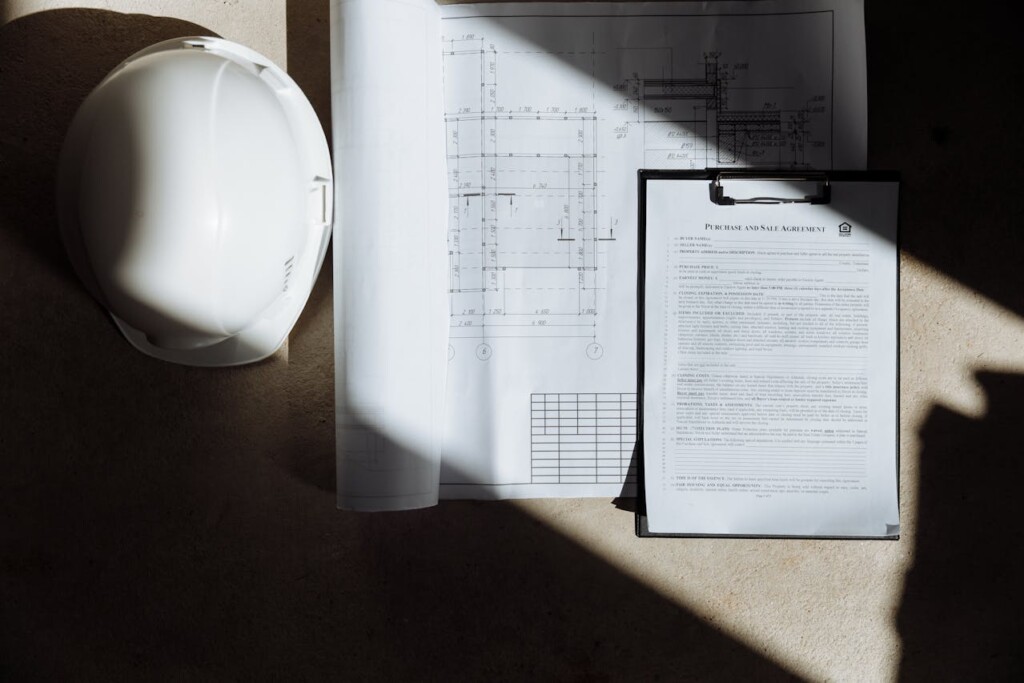
The City of Arlington, TX maintains a dedicated Permits page that serves as your starting point for all construction permitting needs. We recommend beginning with the City’s Permits page to access permit applications, fee schedules, and inspection procedures. The site centralizes resources from Planning & Inspections, Building Codes, and multiple city departments.
First, determine if your project requires a permit by checking the Work Exempt From Permitting list. Projects like replacing roof covering without decking changes, minor electrical repairs, and simple plumbing fixture replacements may not need permits. However, any work involving structural changes, new construction, or significant alterations typically requires city approval.
Permit Application Process
For projects requiring permits, submit applications through Arlington’s online system at ap.arlingtontx.gov. The platform handles residential permits, commercial building permits, electrical work permits, and trade permits. Create a user profile to track application status and receive notifications about review progress.
Prepare detailed construction documents including site plans, structural drawings, and material specifications. The City requires minimum 11×17 inch plans with dimensions clearly marked. Include any prior approvals from the Board of Zoning Appeals or County Board with your submission.
Plan Review And Approval
Arlington’s Planning and Development Services Department conducts plan reviews to ensure code compliance. Review times vary based on project complexity, but residential permits typically process within 10-15 business days. Commercial projects may require longer review periods depending on scope and department coordination needs.
During review, staff check compliance with building codes, zoning requirements, and safety standards. They may request corrections or additional documentation. Address any correction items promptly to avoid delays in permit issuance.
Inspection Scheduling
Once your permit is approved and fees are paid, schedule required inspections through the online portal. Arlington requires inspections at specific construction milestones including foundation, framing, electrical rough-in, plumbing rough-in, and final inspection. Schedule inspections at least 24 hours in advance.
The inspection process ensures work meets approved plans and local codes. Keep approved permits and plans on site during construction for inspector review. Address any inspection failures immediately to maintain project schedules.
How Do You Navigate Permits In Arlington County, VA?
Arlington County, VA requires commercial projects to go through the Permit Arlington portal for building permits. We access this online system to submit applications and upload construction documents for review by multiple county departments.
Applications begin with online submission through the customer portal. Upload all required plans, forms, and supporting documentation in PDF format with proper file naming conventions. Include architectural, structural, mechanical, electrical, and plumbing drawings as needed for your project scope.
Completeness Check And Initial Review
After submission, county staff conduct a completeness check within approximately two business days. During this phase, reviewers verify that all required documents are present and properly formatted. If incomplete, you’ll receive email notification with specific items to address.
Complete applications move to the plan review stage where multiple departments examine submissions for code compliance. Zoning, Inspection Services Division, and Department of Environmental Services coordinate their reviews based on project complexity and scope.
Commercial Plan Review Timelines
Review duration varies by project type and complexity. Interior alterations typically require 10 business days for route-through review, while new construction and additions need 15 business days. Express reviews can reduce timelines to 2-5 business days for qualifying projects.
Express commercial alterations must meet specific criteria including interior-only work, no site modifications, no change of use per building or zoning codes, and no structural modifications. Projects located on middle floors of business or mercantile buildings generally qualify, while first floor, top floor, or below-grade spaces do not.
Track application status through the Permit Arlington portal by accessing Plan Review, then Review Status & History. This shows assigned reviewers, due dates for current steps, and any comments requiring response.
Permit Issuance And Trade Permits
Upon plan approval and fee payment, we receive the building permit and placard digitally through the portal. Print both documents and post the placard prominently at the job site. Keep approved plans available on-site for all inspections.
Most commercial projects require separate trade permits for mechanical, electrical, plumbing, and fire protection systems. Apply for these permits based on work shown in the approved building permit drawings. Each trade permit has its own application, review, and fee structure.
Schedule required inspections through the Permit Arlington system as work progresses. Contact assigned inspectors the morning of scheduled inspections to confirm timing and site readiness. Failed inspections may result in reinspection fees and project delays.
Certificate Of Occupancy Requirements
Projects requiring occupancy before use must obtain a Certificate of Occupancy through a separate application process. Start this process at least two weeks before intended occupancy, as CO applications involve multiple department approvals and inspections.
The CO application includes completeness checks, plan reviews, and inspections from various county departments. Review times typically range from 2-5 business days for commercial projects, with additional time needed for inspection scheduling and completion.
Conclusion and Next Steps
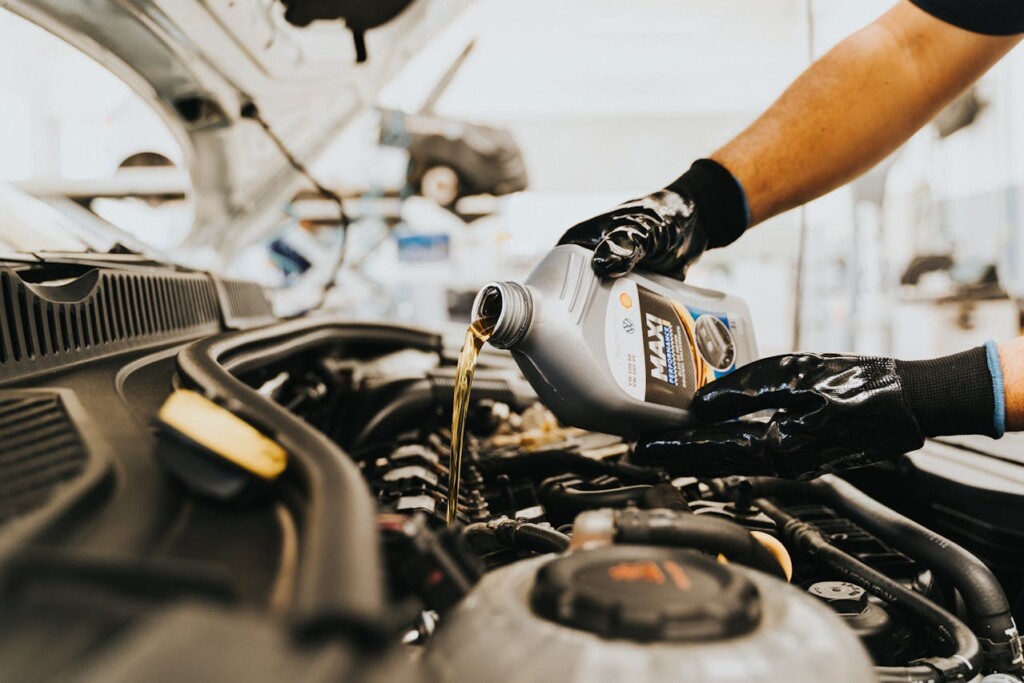
Successful quick lube construction requires early coordination between pit design, electrical classification, and permit requirements. NEC Article 511 classification sets the foundation for your electrical planning, while proper ventilation can often reduce or eliminate hazardous location requirements. We coordinate with the AHJ early in the design phase to confirm classification decisions and avoid costly changes during construction.
The permit path depends entirely on your location. In Arlington, TX, start with the City’s Permits resources to verify exemptions and understand inspection requirements. In Arlington County, VA, the Permit Arlington portal streamlines commercial applications with clear review timelines. Post permits visibly, secure trade permits for electrical, mechanical, and plumbing work, and schedule inspections systematically. Quick lube projects typically require 90 to 120 days from permit approval to opening, so align your design completion, permit submittals, and construction scheduling to meet that timeline.
Ready to move forward with your quick lube project? Contact EB3 Construction to coordinate your design and permitting strategy.

